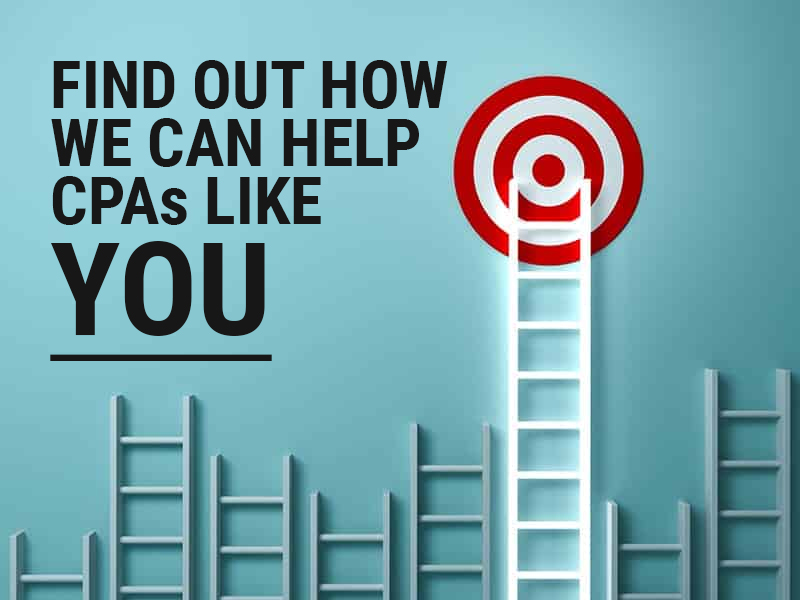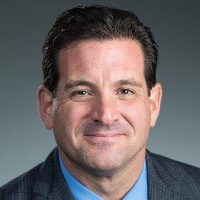Over decades of building your CPA practice, you’ve focused on balance sheets and bottom lines. But as retirement approaches, a new question looms: how will you balance giving back with winding down? In other words, what kind of legacy do you want to leave, and what’s the smartest way to do it? For many CPA firm owners, philanthropy is part of that answer. Not just for personal fulfillment, but for the tax benefits and long-term impact it can create.
In modern retirement planning, leveraging strategic charitable vehicles can amplify both your generosity and your financial efficiency. Two popular tools are private foundations and donor-advised funds (DAFs). While they both let you support the causes you care about and potentially snag some healthy tax deductions, they’re very different in structure and effort required.
But it’s challenging to choose the right giving vehicle to fit your goals. Do you picture establishing a family foundation with your name on it, perhaps engaging your children in running a charitable enterprise? Or would you prefer a simpler, low-maintenance way to fund charities over time without getting into the administrative weeds?
This article will break down private foundations and DAFs side by side so you can decide which aligns with your vision (and yes, your CPA sensibilities). Let’s explore how each option works and what to consider as you craft your CPA legacy of generosity.

Private Foundations vs Donor-Advised Funds: A CPA's Guide
Private Foundation
Your Own Family Charity
- ⚖️ Full Control: You decide investments, grants, and operations
- 👨👩👧👦 Family Legacy: Engage multiple generations in philanthropy
- 🎯 Flexible Giving: Grants to individuals, scholarships, international causes
- 📋 5% Distribution: Must give away ~5% of assets annually
- 💰 Tax Deduction: Up to 30% of AGI for cash gifts
✅ Best For:
- Large charitable goals ($1M+)
- Multi-generational involvement
- Specific charitable programs
⚠️ Consider:
- Significant administrative burden
- Annual Form 990-PF filing
- Excise tax on investment income
Donor-Advised Fund
Foundation-Lite Alternative
- 🚀 Simple Setup: Online application, no lawyers or IRS filing needed
- 🛠️ No Administration: Sponsor handles all compliance and paperwork
- 💡 Advisory Rights: Recommend grants and investments (sponsor approves)
- 💵 Low Minimum: Often $5K-$25K to start
- 📈 Tax Deduction: Up to 60% of AGI for cash gifts
✅ Best For:
- Busy CPAs wanting simplicity
- Flexible timing of grants
- Maximum tax deduction impact
⚠️ Consider:
- Advisory role only (not full control)
- Limited to 501(c)(3) public charities
- Cannot make grants to individuals
Private Foundations: Your Own Family Charity
A private foundation is essentially a charitable organization that you create and control. Think of it as starting your own nonprofit: you (and possibly family members) serve as the funders, the investment committee, and the grant approval board. Classic examples include family foundations started by well-known philanthropists, but you don’t have to be a household name to set one up. In practice, many private foundations are relatively small and family-run – as a CPA, you might establish one to support, say, financial literacy programs or local community causes that matter to you.
You establish a corporation or trust, apply to the IRS for 501(c)(3) tax-exempt status, and fund the foundation with assets (cash, stocks, maybe even shares of your practice sale). The foundation’s assets can be invested and grow tax-free. Each year, the foundation must distribute about 5% of its assets for charitable purposes (grants or operating charitable programs) to comply with IRS rules – a requirement meant to ensure foundations actively benefit the public.
You’ll also pay a small excise tax (~1.39%) on the foundation’s investment income each year. As the founder, you have full control: you decide which qualified charities to support, or even run your own charitable initiatives through the foundation. You also retain control over investments (within prudent management guidelines). This level of control means significant responsibility, as in annual tax filings (Form 990-PF), bookkeeping, adhering to regulations on self-dealing and permissible grants, and possibly managing staff or hiring advisors for help.
In short, a private foundation is like running a small charitable business. It offers freedom with formality: you can carry out almost any charitable activity you envision, but you’ll be running an organization with all the compliance that entails.
Why would a CPA practice owner choose a foundation?
One word: legacy. A foundation can be a vehicle to involve family in philanthropy and carry your values forward long after you’ve retired (or even after your lifetime). You can name the foundation after your family or practice, creating a lasting presence in the charitable world. Family members can sit on the board or even draw reasonable salaries for managing the foundation’s operations, which is a way to engage the next generation in purposeful work. Foundations also allow grants to a wider range of targets than donor-advised funds – not only can they give to public charities, they can (with some oversight) fund scholarships or individuals in need, make international grants, or even run their own charitable programs. If you have a very specific mission in mind (for example, creating a scholarship fund for aspiring accountants from underrepresented groups, or operating a local financial education workshop), a foundation provides the flexibility to do that.
Donor-Advised Funds: Simplicity and Flexibility in Giving
If the private foundation sounds like a lot of work, that’s because it is. Donor-advised funds (DAFs) were created as a sort of “foundation-lite” alternative, giving you some of the key benefits with far less hassle. A donor-advised fund is not a separate legal entity you own, but rather an account held under the umbrella of a public charity (typically a sponsoring organization like a community foundation or a financial institution’s charitable arm). You, as the donor, irrevocably contribute assets to that charity, and those assets go into your donor-advised fund account (often you can choose a name for your fund, like “The Smith Family Charitable Fund”). From that point on, the sponsor charity legally owns the assets, but you retain the right to advise how the money is invested and distributed to other charities over time.
In practice, a DAF works a lot like a charitable investment account: you donate, you get an immediate tax deduction, and then the funds can be granted out to charities at your recommendation on your own timetable. For busy retiring CPAs, the immediate appeal is simplicity. Setting up a DAF is usually as quick as filling out a form online or with a sponsoring foundation, with no lawyers or IRS applications needed.
There’s typically no startup cost or a very modest initial contribution requirement (many national DAF sponsors have minimums like $5,000 or $25,000 to open an account, which is a far cry from the seven-figure sums often used to justify a foundation). All the administrative heavy lifting – tax filings, accounting, compliance – is handled by the sponsoring organization. You won’t be worrying about filing a Form 990 for your DAF; you just get periodic statements of your fund’s balance and grant activity.
As for control, you get to recommend grants from your DAF to any qualified 501(c)(3) public charity. Want to donate $10,000 to your alma mater’s scholarship fund this year and $5,000 to a local animal shelter next year? Just advise the sponsor and they will issue the grants in your fund’s name (or anonymously, if you prefer). You can also typically advise how the fund is invested from a menu of options (e.g. various investment portfolios or allocations the sponsor offers). Some sponsors even let you or your financial advisor actively manage the investments in the DAF account (particularly for larger accounts), though within guidelines.
The key difference is that with a DAF, your input is advisory. Legally, the sponsor has final say. In reality, sponsors almost always approve legitimate grant recommendations that comply with IRS rules (it’s in their interest to facilitate giving). But you can’t, for example, force a grant that doesn’t meet the criteria (no grants to individuals or non-charities, for instance, and you can’t use DAF funds to satisfy a personal pledge or buy tickets to a charity gala that you’ll attend – those are prohibited benefits).

Tax Deduction Impact Comparison
Maximum Annual Charitable Deductions by Vehicle Type
(held >1 year)
💡 Key Insight for CPAs
Donor-advised funds allow you to take a larger bite out of your taxable income in the year of the gift. This doesn't necessarily make DAFs "better" – it just means they front-load the tax reward, which can be very useful in high-income years like when selling your practice.
Real-World Example: $500K AGI CPA Practice Owner
Private Foundation
Cash gift limit: $150,000 (30% of AGI)
Securities limit: $100,000 (20% of AGI)
Best for: Spreading large gifts over multiple years
Donor-Advised Fund
Cash gift limit: $300,000 (60% of AGI)
Securities limit: $150,000 (30% of AGI)
Best for: Maximizing single-year tax impact
As the chart highlights, donor-advised funds let you take a larger bite out of your taxable income in the year of the gift. This doesn’t necessarily make DAFs “better” – it just means they front-load the tax reward, which can be very useful in high-income years. Private foundations still let you deduct a lot; you might just spread very large gifts over a couple of years to fully utilize deductions (carryovers last up to 5 years).
Which Structure Fits Your Legacy?
With a solid understanding of both vehicles, the final decision comes down to personal priorities. Here are some guiding considerations to help you determine the best fit for your situation:

Which Charitable Vehicle is Right for You?
A private foundation might be right for you if...
-
You want complete control over your charitable endeavors. This includes deciding on grant recipients without a middleman, setting investment policy, and having a formal say in all operations. You're comfortable managing (or hiring someone to manage) the administrative aspects.
-
You have a specific vision or mission that might go beyond standard grantmaking. For example, you may want to run scholarship programs, provide direct grants to individuals in hardship, or fund overseas projects – flexibility that a foundation can offer with proper compliance.
-
You're committing a significant amount of money (often multiple millions) to philanthropy, enough to justify the costs. You view the expenses as worthwhile to have your own entity.
-
Legacy is a top priority: You like the idea of a named family foundation that can exist perpetually. You want to involve your family in a structured way – e.g., having annual board meetings with your children to decide grants, grooming the next generation to carry on the foundation's work. The foundation itself is a part of how you want to be remembered, perhaps as a capstone to your career as a CPA who gave back.
-
You don't mind being in the public eye with your giving (or you see transparency as a plus). You're okay with the fact that anyone could look up your foundation's filings. In fact, you might welcome the accountability or recognition that comes with it.
A donor-advised fund might be right for you if...
-
You value simplicity and flexibility above all. You prefer to spend your retirement years enjoying philanthropy (making grants to charities you love) rather than managing an organization. The turnkey nature of a DAF is appealing – you can focus on the fun part of giving without worrying about tax returns and compliance.
-
Maximizing the immediate tax benefit of charitable giving is important to you. For instance, you might be looking at a big taxable event (selling your practice, converting a retirement account, etc.) and want to offset income in that year. A DAF allows larger deductions quickly and easily.
-
You're starting with a more modest charitable pool of funds. If you plan to set aside, say, $50,000 or $200,000 for charity initially, a private foundation's overhead likely isn't worth it. A DAF lets you start at a level comfortable for you, and you can always add more later. (Many donors incrementally fund DAFs over time – it's very scalable.)
-
You desire anonymity or low profile giving. If you'd rather keep your name out of the spotlight, a DAF offers that privacy in a way a foundation cannot. You can even name the fund something unrelated to you if you like.
-
You appreciate that there's no minimum annual distribution pressure. This can be useful if, for example, one year you're unsure which charities to support – you can wait without consequence. Or if you want the fund to grow for a while (to potentially give larger grants later or in a crisis year), you have that freedom.
-
You like the optionality and ease of exit. By optionality, we mean you aren't locking yourself into an endless commitment. If at any point you want to finish your charitable giving, you can grant out the remainder of your DAF to charities and wind it down quite easily. There's no complex dissolution process as there might be for a foundation (which would involve distributing remaining assets to charities and formally closing the entity). In short, a DAF is as permanent or impermanent as you want it to be.
💡 The Bottom Line for CPAs
Both vehicles can be powerful tools in your retirement and legacy planning. The choice often comes down to your desired level of involvement, the size of your charitable goals, and whether you prioritize control or convenience.
It’s worth noting that these options aren’t mutually exclusive for some folks. There are CPA families who maintain a private foundation and a donor-advised fund. How so? Sometimes they use a DAF to handle anonymous grants or grants outside the scope of their foundation’s main mission. Or they might gradually transfer foundation assets into a DAF when they no longer wish to manage the foundation (a process that can satisfy the 5% payout requirement in the process). However, for most, choosing one primary vehicle is the easiest path.
In Conclusion
In many cases, donor-advised funds provide an accessible on-ramp to philanthropy, ideal for those who want to “test the waters” or keep things simple. On the other hand, foundations can become a family legacy project, perfect for those ready to embrace a lifetime (and beyond) of organized giving. Whichever route you consider, it’s wise to discuss your plans with your financial and tax advisors, and perhaps with your family as well. Integrating charitable giving into your retirement strategy requires careful thought – balancing generosity with ensuring your own financial security for the years ahead.
At CPA Retirement Solutions, we’re here to help you navigate these kinds of pivotal decisions. We understand the tax implications, the emotional factors, and the practical logistics that go into choosing a path for your charitable legacy. If you’re still unsure which structure best fits your CPA legacy, let’s figure it out together. Just click the button below!









